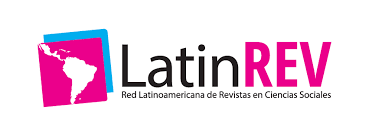Psychosocial and governmental factors present in the social reality of human trafficking in Mexico
DOI:
https://doi.org/10.18050/regunt.v3i2.02Keywords:
human trafficking, organized crime, psychosocial factors, slavery, child pornography, sex tourism, child prostitutionAbstract
The study aimed to analyze the issue of human trafficking, specifically child exploitation, its causes and consequences. The methodology employed was a documentary review of the laws, regulations and agreements signed by over 100 countries regarding human trafficking and child exploitation, along with an analysis of the psychosocial factors that lead to the vulnerability of children and adolescents. Among the results, it was found that human trafficking is the third most profitable crime globally, after drug trafficking and weapons sales. Child exploitation includes pornography, sex tourism, child prostitution, among other forms. This problem continues to grow daily despite legislative and preventive efforts by countries. The study concludes that social, family and individual factors persist that perpetuate the vulnerability and risk of children and adolescents to human trafficking and child exploitation networks. Comprehensive prevention, detection, rescue and restoration of victims’ rights actions are required.
Downloads
References
Boles, J. C., & Miyamasu, C. M. (2022). Human Trafficking. En Advances in Psychology, Mental Health, and Behavioral Studies (pp. 300–325). IGI Global.
Cheetham, A. L., & Hurst, I. A. (2022). Human trafficking: When to suspect in the pediatric emergency department? Pediatric Emergency Care, 38(4), 167–171. https://doi.org/10.1097/pec.0000000000002685
Comisión Nacional de los Derechos Humanos (CNDH). (2013). Diagnóstico sobre la Situación de la Trata de Personas en México.
Darmayanti, K. N., Dantes, K. F., Ardhya, S. N., & Setianto, M. J. (2022). Tindak pidana perdagangan orang (human trafficking) sebagai transnational crime. Ganesha Law Review, 4(2), 33–42. https://doi.org/10.23887/glr.v4i2.1425
Ley General para Prevenir, Sancionar y Erradicar los Delitos en Materia de Trata de Personas y para la Protección y Asistencia a las Víctimas de estos Delitos de 2012. (19 de marzo de 2014).
Luengo, J. (2004). La educación como objeto de conocimiento. El concepto de educación. Teorías e instituciones contemporáneas de educación (pp. 23-42). Madrid: Biblioteca Nueva.
Moreno, S . (2013). Algunas consideraciones sobre el maltrato infantil en México. México: Centro de Estudios Sociales y de Opinión Pública.
Naciones Unidas. (2003). Protocolo para prevenir, reprimir y sancionar la trata de personas, especialmente mujeres y niños, que complementa la Convención de las Naciones Unidas contra la delincuencia organizada transnacional. http://www.accem.es/ficheros/documentos/pdf_trata/Protocolo_Palermo_- ESP.pdf
SECTUR (s.f) Secretaría de Turismo -Universidad del Caribe. (s.f.). Propuesta técnica para las asesorías para identificar los factores que permiten la trata de personas en el sector turístico, e instrumentación de mecanismos de acción para los diferentes sectores: académico, empresarial, laboral e institucional; para el combate a la problemática desde la óptica de la prevención. Entregable III. Tomo I. Revisión documental, antecedentes y marco institucional sobre la trata de personas en cada destino analizado, y desarrollo metodológico de los instrumentos a aplicar. www.sectur.gob.mx/PDF/planeacion.../1_PRIMER_ENTREGABLE.pdf
Robaina, G. (2001). El maltrato infantil. Revista Cubana de Medicina General Integral, 17(1).
Spicker, P., Álvarez Leguizamón, S. y Gordon, D. (2009). Pobreza: Un glosario internacional. Buenos Aires: Consejo Latinoamericano de Ciencias Sociales – CLACSO.
UNICEF (2008). Trabajo infantil: ¿Dónde está? Manual para el apoyo familiar. Santiago de Chile: Programa Puente-Fondo de Solidaridad e Inversión Social.
Downloads
Published
How to Cite
Issue
Section
License

This work is licensed under a Creative Commons Attribution 4.0 International License.
La Revista Regunt usa la licencia Creative Commons de Atribución; pudiendo:
Compartir — copiar y redistribuir el material en cualquier medio o formato
Adaptar — remezclar, transformar y crear a partir del material
para cualquier finalidad, incluso comercial.









